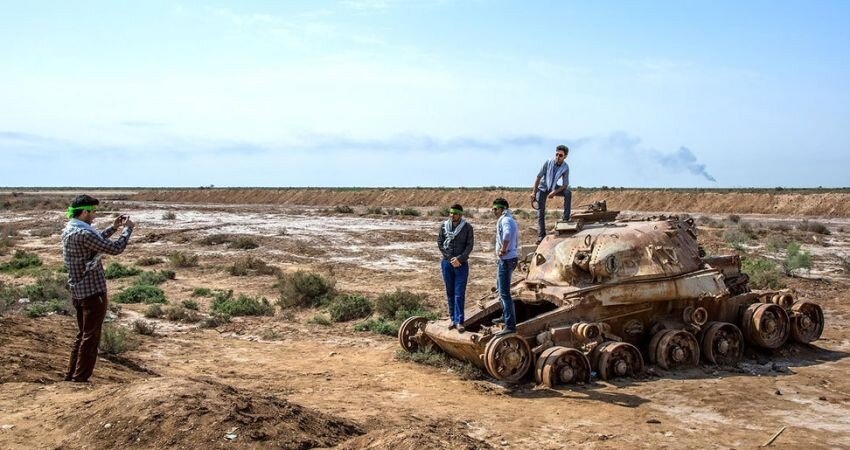Vacations on the edge: a glance of war tourism in Iran

On one hand, even talking about war is bitter, particularly for those who went to the second-longest war of the 20th-century after the Vietnam War. On the other, walking through former battlefields or visiting war ruins and relics at a museum may give you a profound impression over the grimy face of war, and deeper insight to whom once involved in the battle.
Whatever you call it, war tourism, dark tourism, disaster tourism, or danger tourism is what Iran has more to offer. In fact, it is high on the ‘will go’ index of adventure travelers interested in such niche tourism which traditionally reaches its climax these days!
At this time of the year, the nation holds special ceremonies to honor the fallen soldiers and to cherish the strength and resistance of the people during “the Sacred Defense Week”, starting on Shahrivar 31 (September 21 this year) when Iraqi armed forces invaded western Iran.
Now, the country has largely been restored, and very few signs of the war, apart from street names and murals of the martyrs on some streets, can be found. In border cities like Khoramshahr and Abadan, however, there are still areas that need to be developed. These are the areas where domestic travelers usually go by tour packages are called “Rahiane Nour” (“The Path of Light”).
Apart from former battlefields, almost all of which is cleaned from land mines or unexploded missiles, you can visit an epitome of frontlines in the hearth of Tehran; the Sacred Defense Museum; Tehran Peace Museum; and Behesht-e Zahra—a graveyard where many of the martyrs are buried.
The epic-scale Sacred Defense Museum may not be top on the list for travelers to the Islamic Republic but it does bargain something different in modern Iranian history where you can delve into wreckages of rockets, tanks, rifles, vessels, mortars, radars, air defense systems, grounded jets, military supplies and artillery pieces amongst others.
The Hall of Butterflies greets visitors on arrival, the place is dedicated to martyrs and victims of the war filled with personal belongings found on the various battlefields. Outside, a patchwork of domestically-manufactured armaments such as rockets, tanks, and artillery pieces are on show. The complex has vast garden areas, water features, and children’s play areas as well.
The Sacred Defense Museum is equipped with a state-of-the-art visual system including projections and video walls, while audio recordings relevant to each period contribute to its charm. The recreation of the liberation of the city of Khorramshahr by the means of virtual exhibits and video projections is amongst the main features of the museum where stands a replica of the Khorramshahr mosque adorned with creamy and turquoise patterned tiles. The strategic port city fell into Iraqi hands on October 26, 1980. It was recaptured by Iranian forces on May 24, 1982.
Some tourists say they are not just interested in visiting live or former warzones out of curiosity. What motivates those is gussing the stories of people who lost their lives, being displaced, wounded, captured, or lost their loved ones in those bitter moments of the history of mankind.
AFM/MG
Leave a Comment